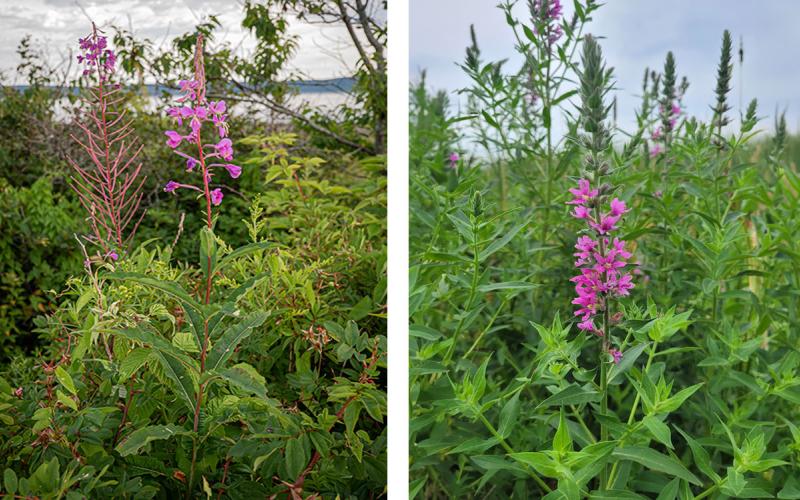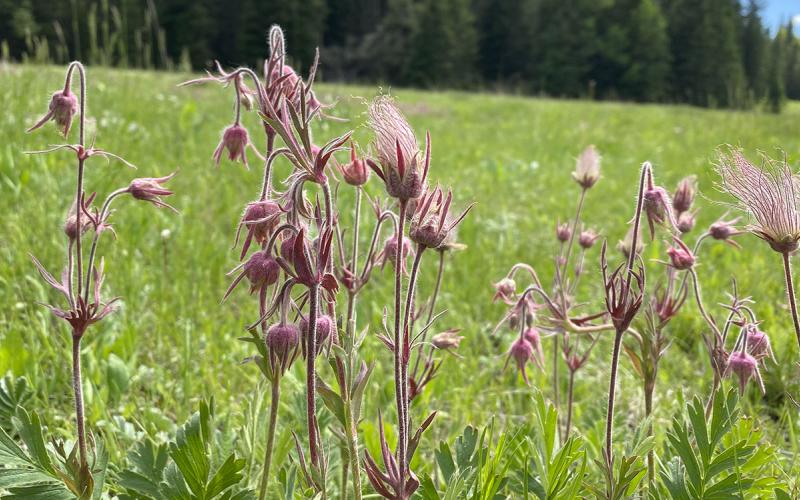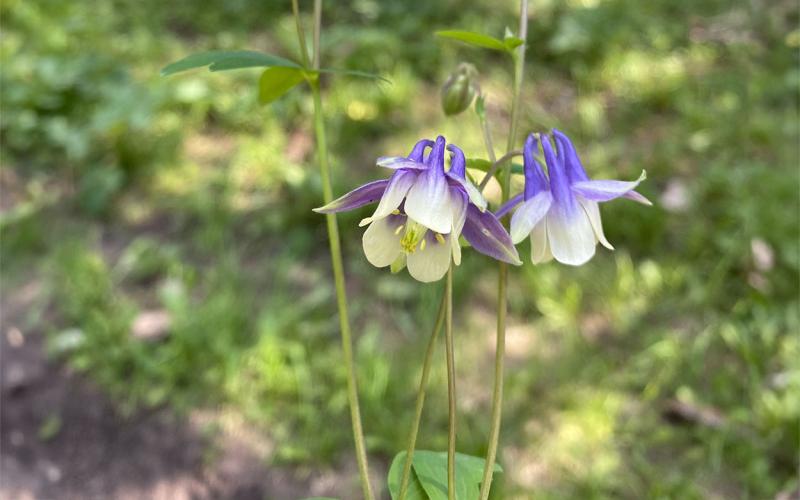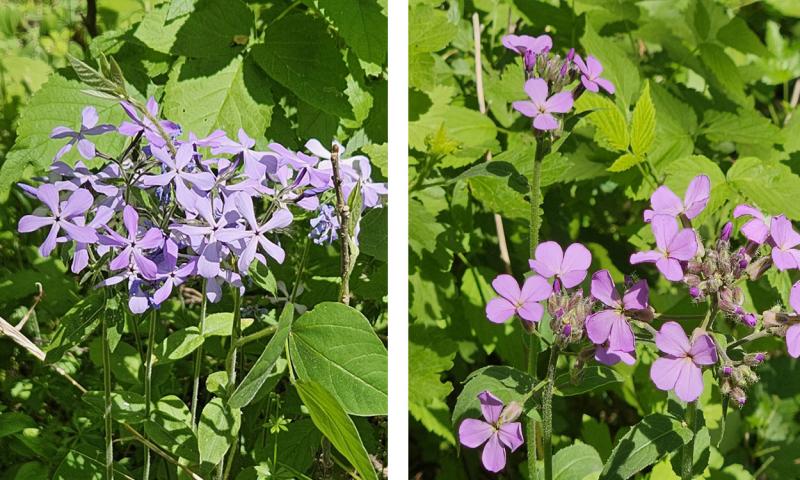
Written by Bret Lang, SDSU Department of Natural Resource Management Graduate Research Assistant, under the direction and review of Lora Perkins, Associate Professor, and Kristine Lang, Assistant Professor and SDSU Extension Consumer Horticulture Specialist.
Plant Profiles
With their striking pink and purple flowers, phlox is a favorite native plant among people exploring South Dakota’s prairies and woodlands. There are two species of phlox found in South Dakota, prairie phlox (Phlox pilosa, Figure 1) and wild blue phlox (Phlox divaricate, Figure 2). There is, however, a non-native look-a-like that people often confuse with phlox. This look-alike, called dame's rocket (Hesperis matronalis, Figure 3) is a mustard native to Eurasia and was introduced to North America during European settlement in the 1600s, and it has now become established in many parts of the northern United States and Canada.
Because of its similar appearance to phlox species, it is often not recognized as an invasive plant; however, if left uncontrolled, dame’s rocket can quickly establish and dominate a landscape. Distinguishing between phlox species and dame's rocket can be challenging due to their similar appearance; however, there are key characteristics that can help you distinguish between the two species.
Prairie Phlox
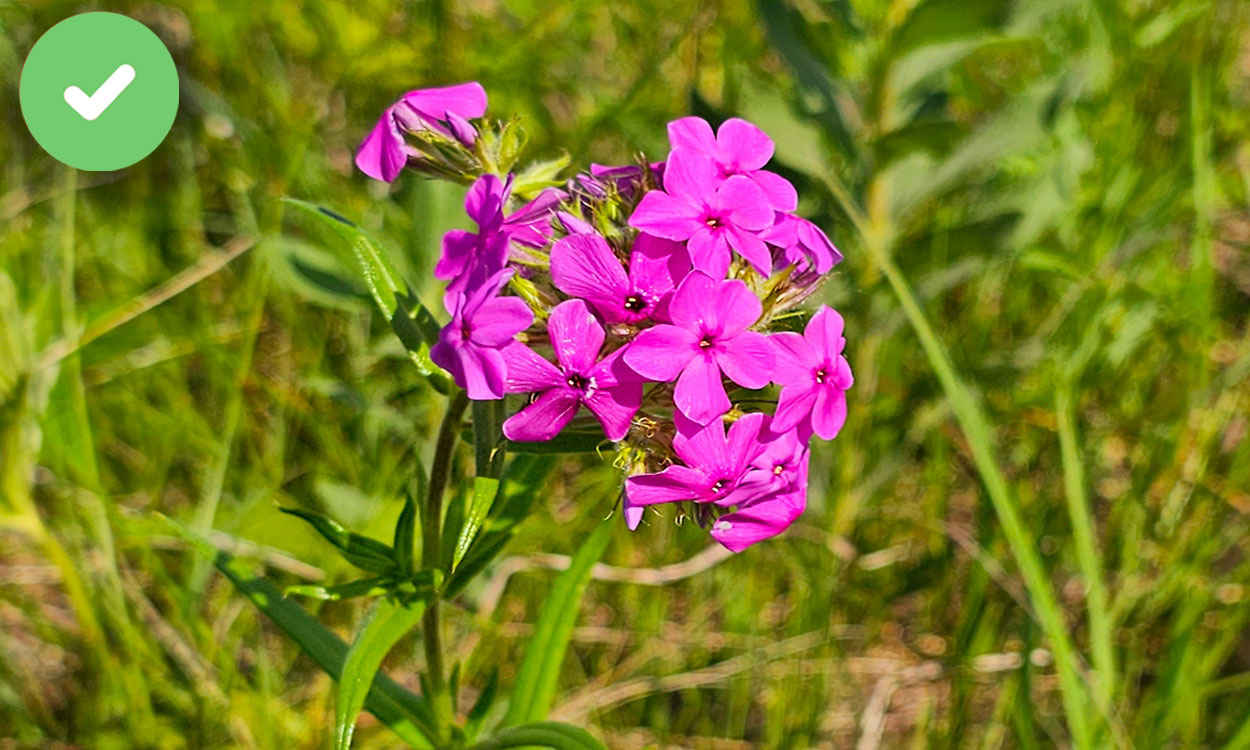
Wild Blue Phlox
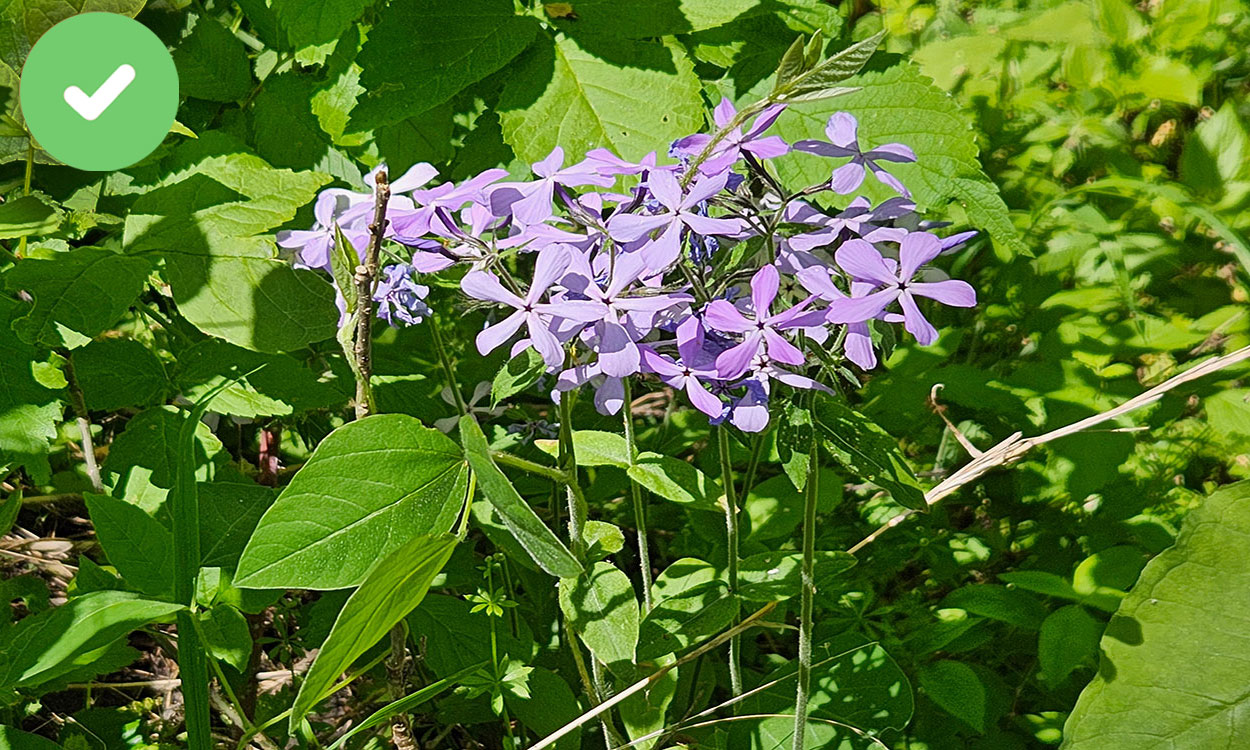
Dame's Rocket
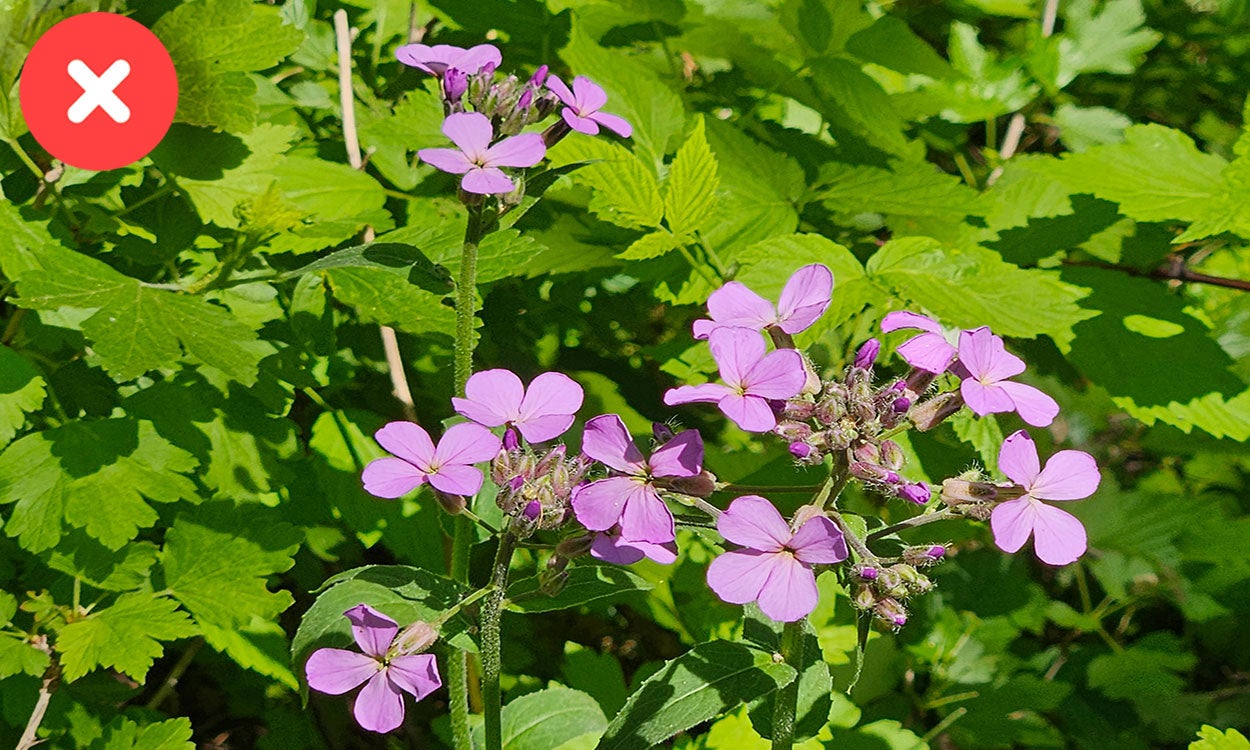
Flower Structure
One of the most-reliable ways to differentiate phlox and dame's rocket is by examining their flower structures. Phlox species have tubular flowers with five distinct petals. The petals are usually a pale lavender or pink color for prairie phlox (Figure 4) and blue for wild blue phlox (Figure 5). For both phlox species, flower clusters are relatively loose and spread out along the stem. On the other hand, dame's rocket flowers are four-petaled and are typically arranged in dense, upright clusters (Figure 6). The flowers come in a variety of colors, including white, pink, and purple. Additionally, dame's rocket flowers often have a strong, sweet fragrance, which is absent in phlox.
Prairie Phlox
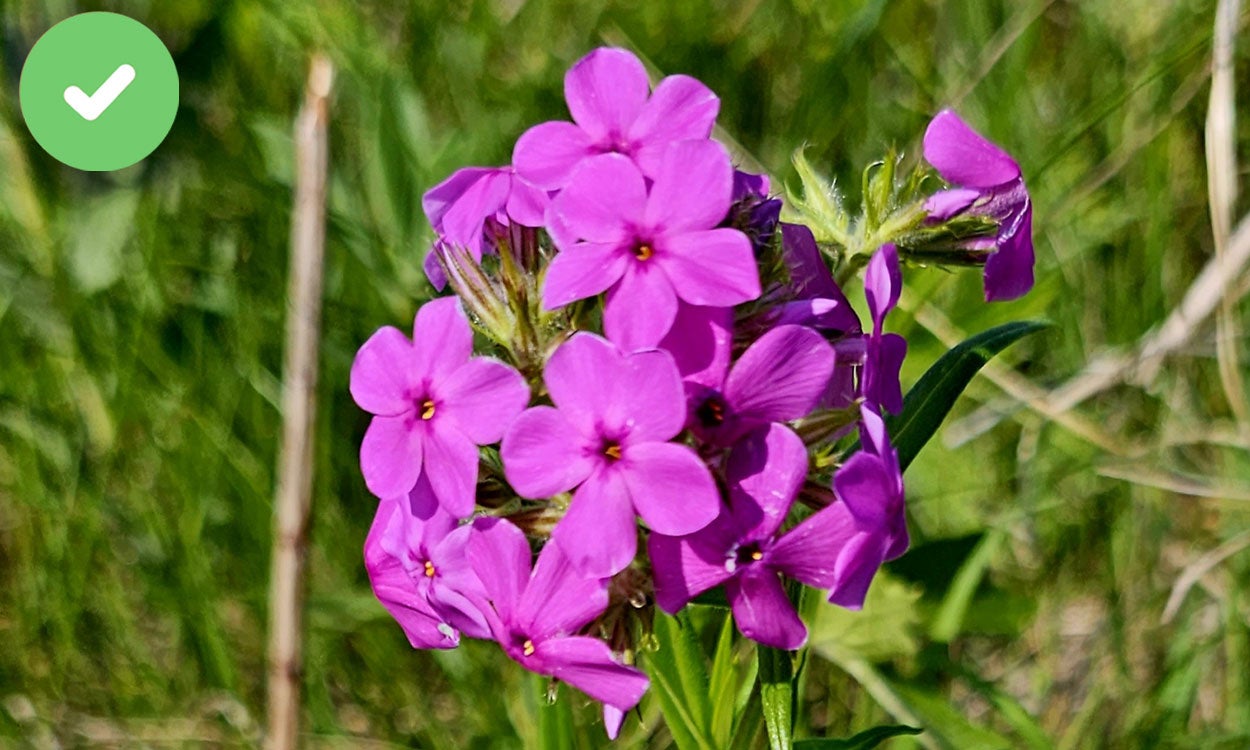
Wild Blue Phlox
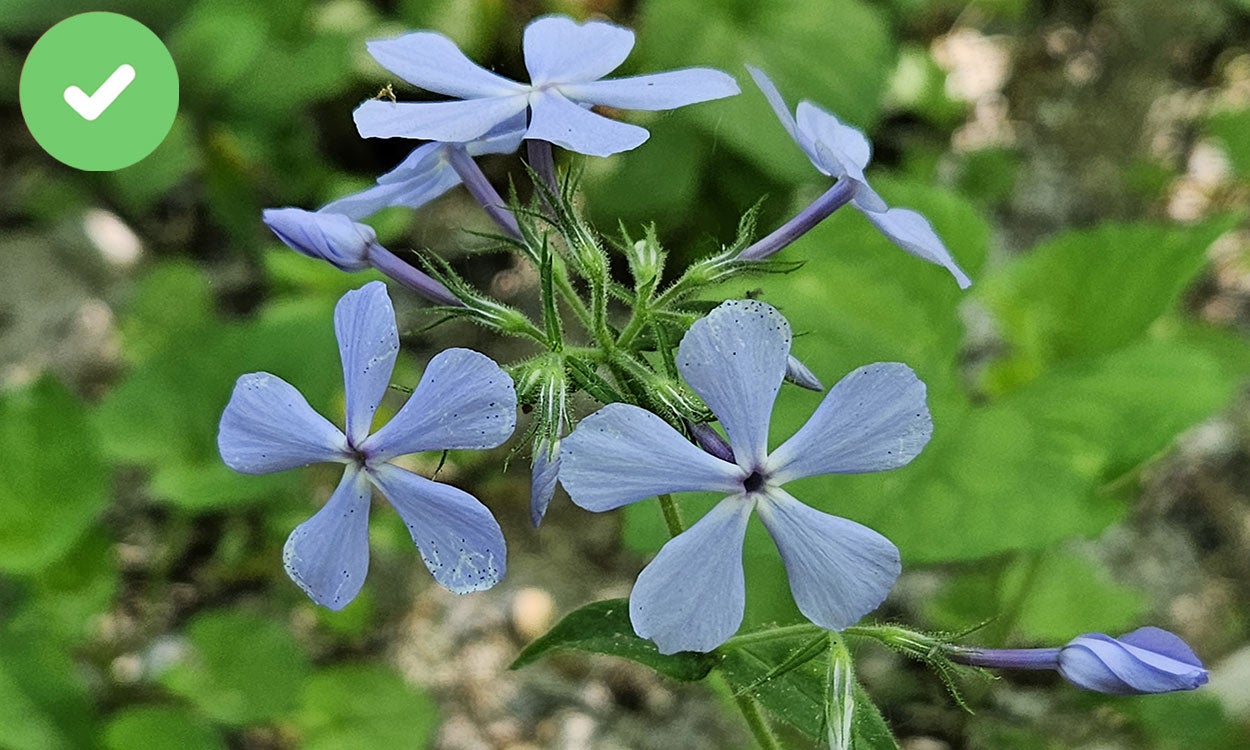
Dame's Rocket
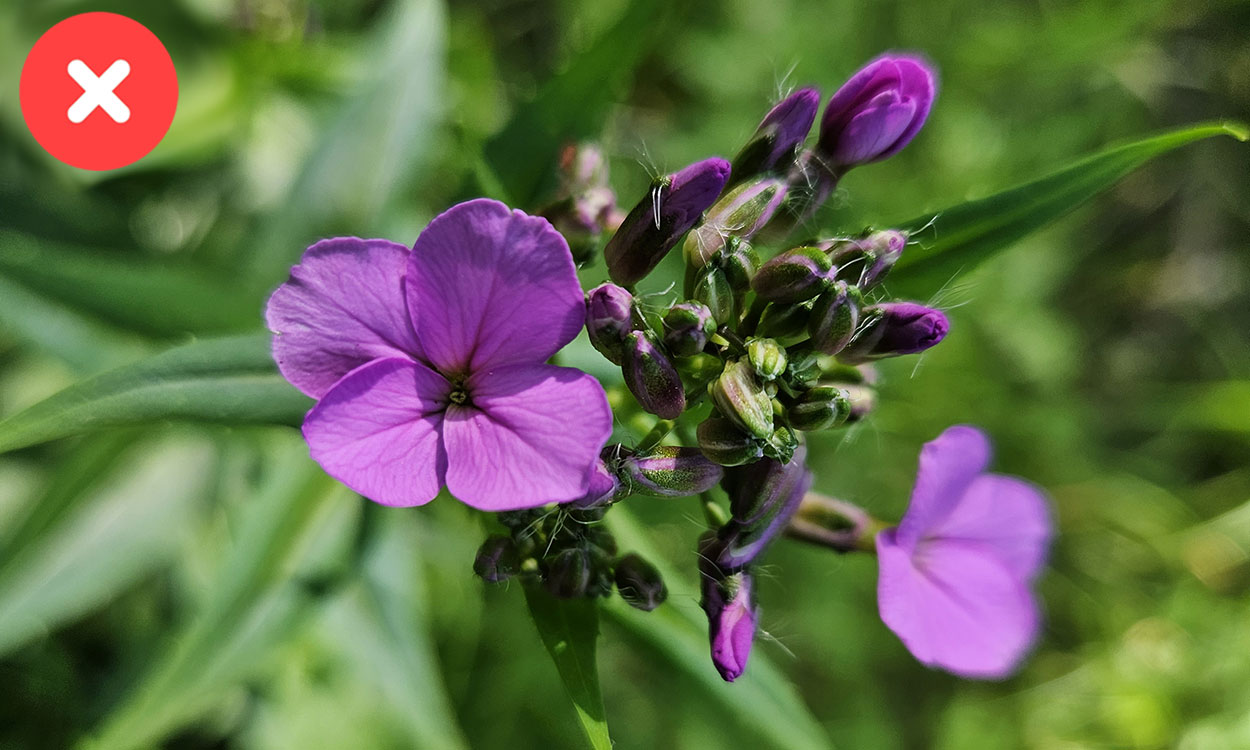
Leaf Structure
Another distinguishing feature is the arrangement of leaves on the stem. Phlox has opposite leaves, meaning that the leaves grow in pairs directly across from each other on the stem. The leaves are lance-shaped with pointed tips. Prairie phlox leaves are hairy (Figure 7) while wild blue phlox has smooth leaves (Figure 8). In contrast, dame's rocket has alternate leaves (Figure 9), which means that the leaves grow singly along the stem, alternating sides. The leaves of dame's rocket are lance-shaped as well, but they tend to be smoother and less hairy than those of prairie phlox.
Prairie Phlox
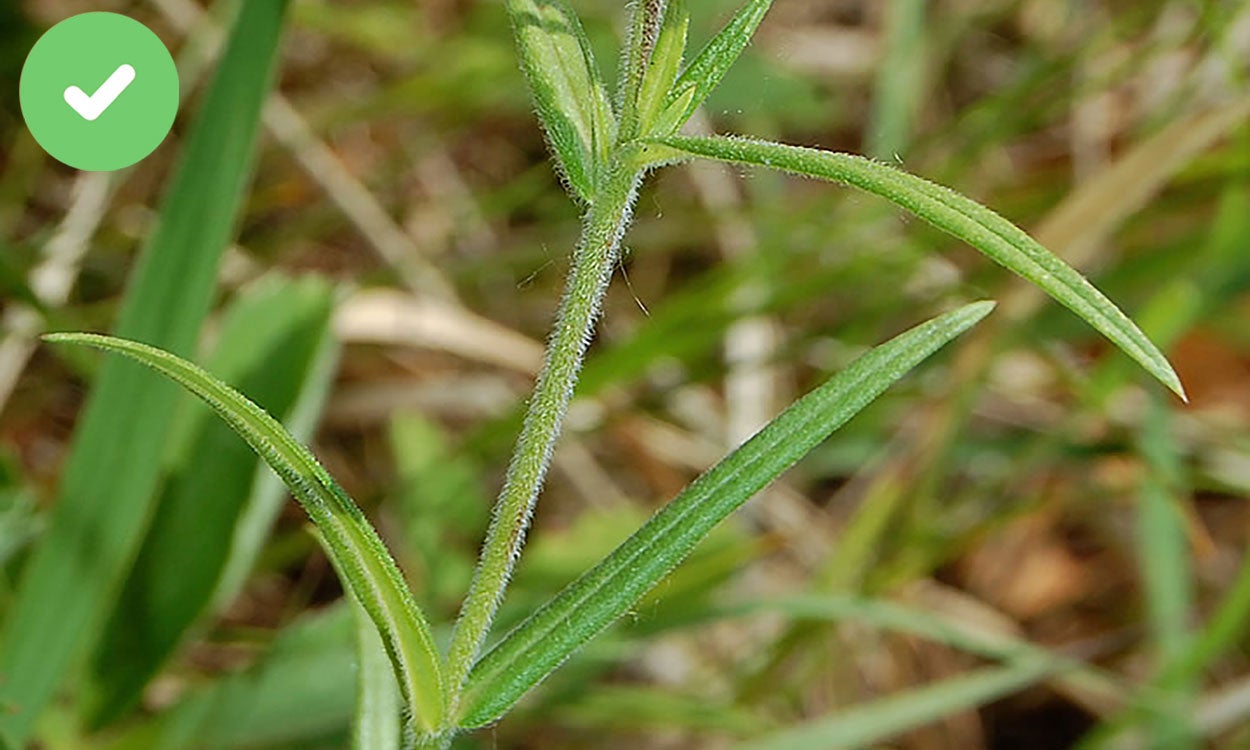
Wild Blue Phlox
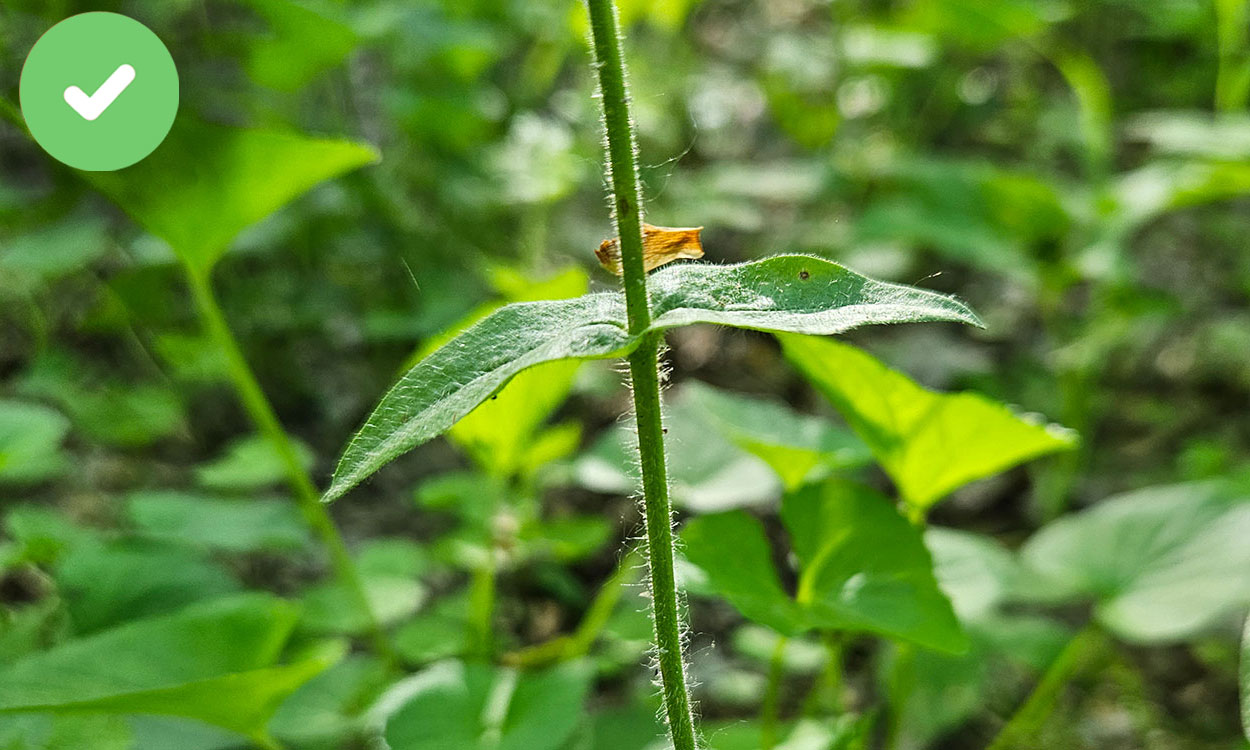
Dame's Rocket
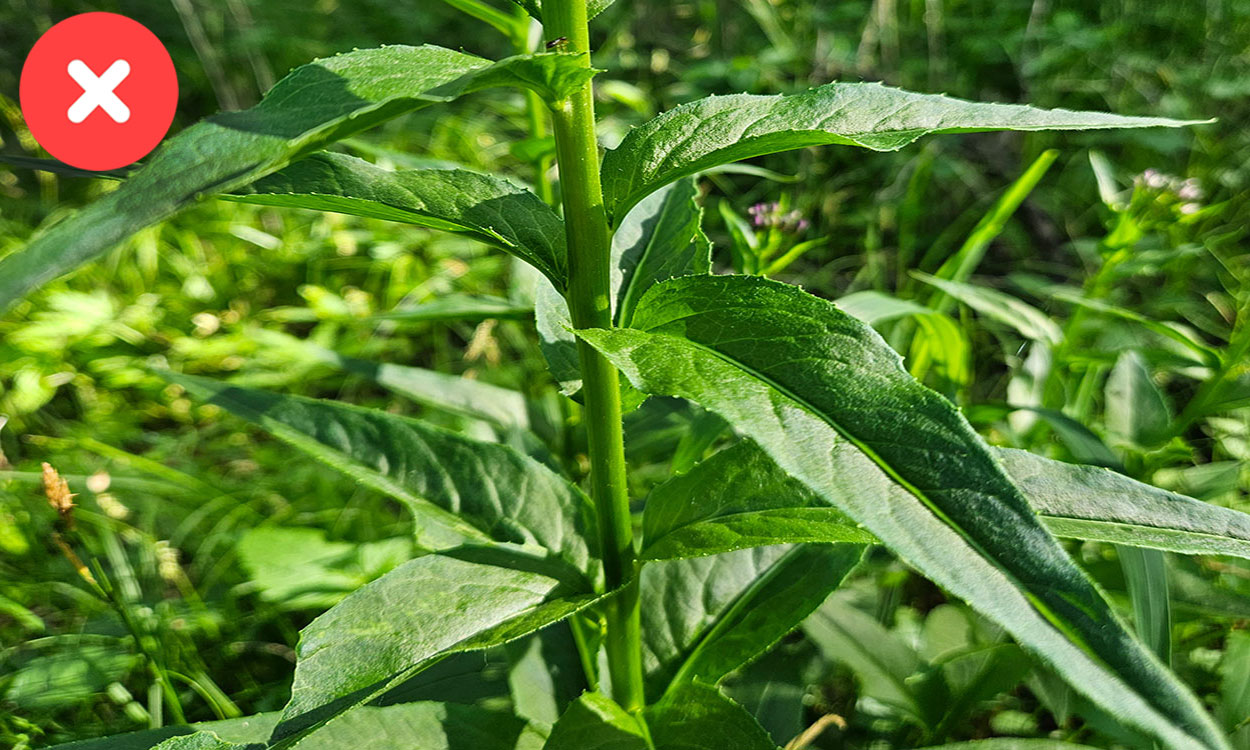
Habitat and Growth Patterns
Observing the habitat and growth pattern can also aid in identifying phlox and dame's rocket. Prairie phlox is commonly found in prairies, meadows, and open woodlands (Figure 10). It typically grows in dense clumps or patches, with each stem reaching a height of one to two feet. Wild blue phlox is commonly found in woodlands, stream banks, and shaded slopes (Figure 11). It typically grows in loose clumps, with stems reaching one to two feet. On the other hand, dame's rocket is often found along roadsides, disturbed areas, and gardens (Figure 12). Dame's rocket can grow much taller than phlox, reaching heights of two to four feet, and its stems tend to be more erect than phlox.
Prairie Phlox
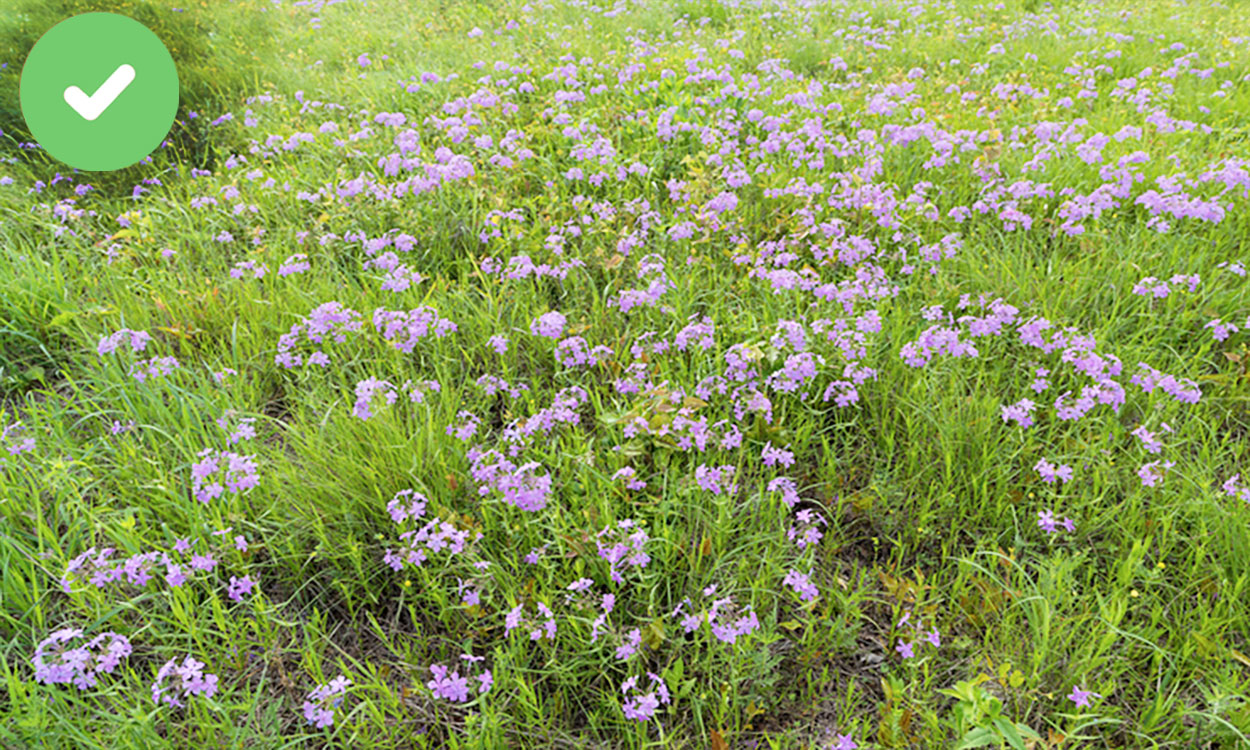
Wild Blue Phlox
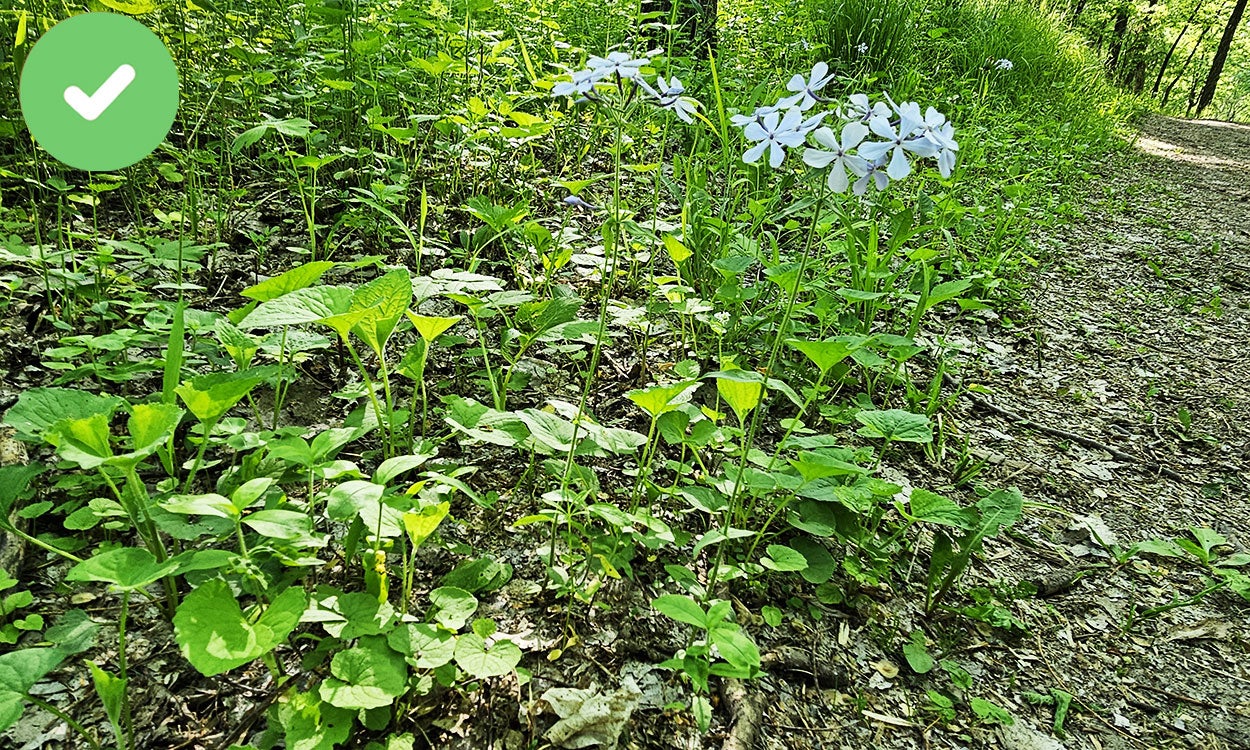
Dame's Rocket
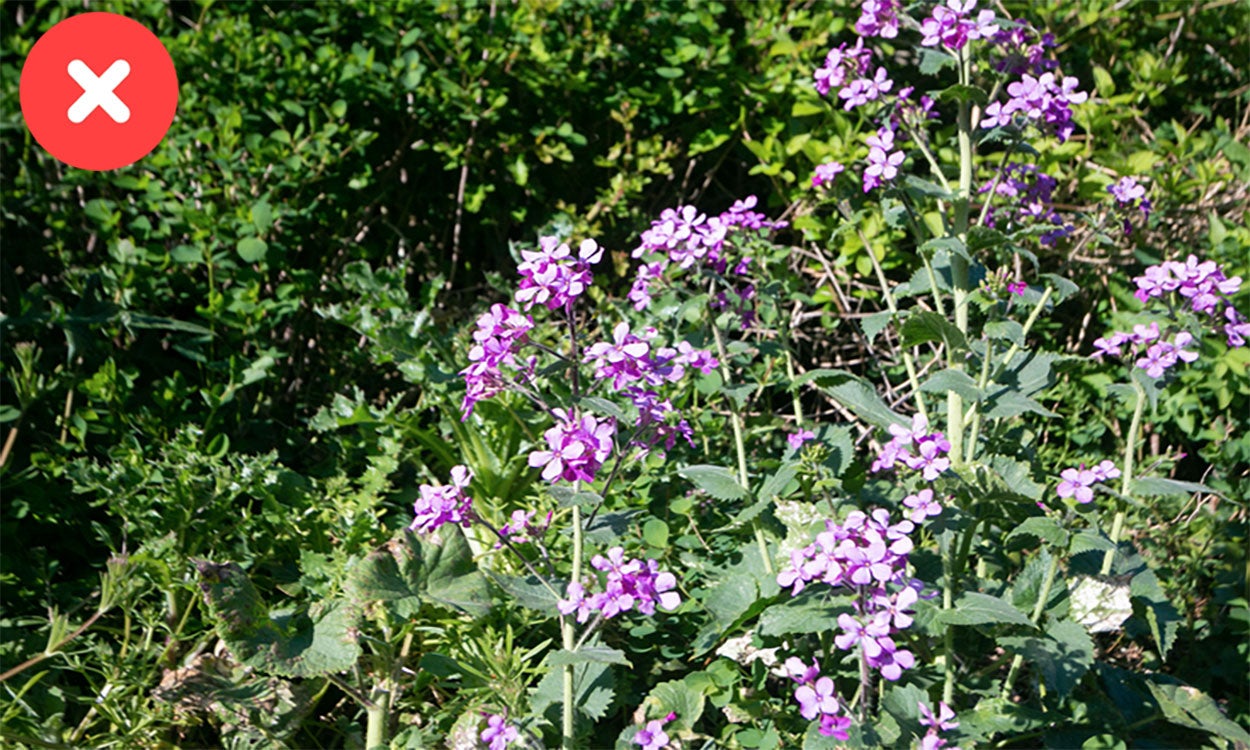
Managing Dame’s Rocket
Dame’s rocket is sometimes sold in garden centers or in “wildflower” seed mixes. However, avoid planting dames’s rocket in your garden, as it can quickly spread to areas where it is not wanted. Also, always check mixed seed packets to make sure they do not include dame’s rocket seeds. Once established in an area, dame’s rocket can become a daunting problem. For small patches, hand pulling may suffice, however larger patches may require mowing. To prevent dame’s rocket from proliferating and spreading, you will need to remove it before it has a chance to set seed. It is important to note that dame’s rocket is a biennial, meaning that it grows only foliage in its first year and then flowers and sets seed in its second year. Because of this it may take a few years of pulling and mowing to rid the infestation. Because dame’s rocket is often found in areas where there are also native plants, mechanical removal of plants or mowing may be the best option. However, if the infestation is severe, or hand pulling or mowing is not feasible, you may consider using selective herbicides, remembering to always follow the manufacturer's instructions and take necessary precautions.
References and Resources
- Native Plant Initiative. South Dakota State University.
- Phlox. SDSU Extension.
- Dame’s Rocket. Iowa Department of Natural Resources.
- Dame’s Rocket - Wisconsin Horticulture. UW-Madison.
